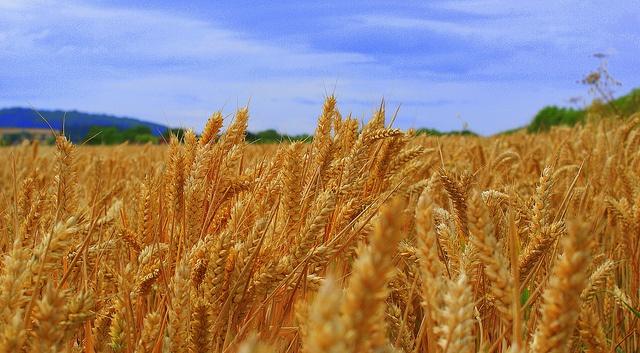
The Environmental Defense Fund is collaborating with Smithfield Foods and its livestock production subsidiary, Murphy-Brown LLC, to help farmers optimize fertilizer application on livestock grain. More efficient application of fertilizer leads to a reduction in greenhouse gas emissions and water pollution, while lowering farm input costs and maintaining crop yields.
Crops need fertilizer, but too much nitrogen fertilizer can run off the farmland and into water sources, including lakes and streams. Excess amounts of fertilizer also emits nitrous oxide, a greenhouse gas 300 times more potent than carbon dioxide. The agriculture sector is the fifth largest source of GHG emissions in the U.S.
Nitrous oxide accounted for about 6 percent of all U.S. GHG emissions from human activities in 2012, but it accounts for about 40 percent globally. The Environmental Protection Agency (EPA) cites agricultural soil management as the largest source of nitrous oxide emissions in the U.S. In 2012, agricultural soil management accounted for about 75 percent of all nitrous oxide emissions in the U.S. Nitrous oxide emissions have increased in the U.S. by about 3 percent between 1990 and 2012--and are projected to increase by about 5 percent between 2005 and 2020, mostly from agriculture.
Farmers who sell grain to Murphy-Brown will be taught through the program to use new tools and practices to more precisely use fertilizer. The goal of Murphy-Brown, which raises hogs in North Carolina, is to have 75 percent of its grain-sourcing acres in the Southeast participate in the fertilizer optimization program by 2018. The program will start in North Carolina, Virginia and South Carolina, and will expand to Midwest farmers in 2015. EDF estimates that through the collaboration, Smithfield will reduce excess nitrogen fertilizer on more than 450,000 acres and reduce GHG emissions from agriculture by over 60,000 tons, equivalent to taking about 13,000 cars off the road.
The program is part of EDF’s Sustainable Sourcing Initiative, which works with farmer networks to both identify and reduce environmental impacts of agriculture in the supply chain. The Sustainable Sourcing Initiative has helped reduce fertilizer loss by an average of 20 percent on a half million acres.
EDF is working with Walmart to reduce GHG emissions from its supply chain by 20 million metric tons by 2015. A big part of that reduction will come from using fertilizer more efficiently on farmlands. Walmart’s commitment requires that suppliers of products who use grains develop plans to optimize fertilizer use on farms. Grains are used in a wide variety of products, including cereal and soda. EDF projects that Walmart’s commitment will reduce fertilizer use by up to 30 percent and cut 7 million metric tons of GHG emissions. Smithfield is one of Walmart’s biggest suppliers, and Walmart picked Smithfield’s fertilizer optimization plan as the “best in class” out of 14 other plans submitted.
Image credit: Lauren Tucker

Gina-Marie is a freelance writer and journalist armed with a degree in journalism, and a passion for social justice, including the environment and sustainability. She writes for various websites, and has made the 75+ Environmentalists to Follow list by Mashable.com.














